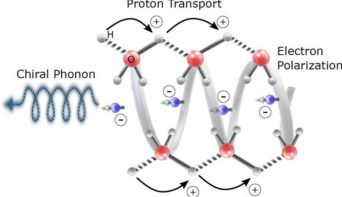
By Hamish Johnston at the CAP Congress in Edmonton, Alberta
One promising route to understanding the causes of Alzheimer’s disease (AD) – and hopefully finding a cure – is the study of how and why proteins in the brain sometimes form neurotoxic plaques. These plaques are disc-like structures that are about 50 µm in diameter and made from polypeptides. Their presence in the grey matter of the brain is strongly associated with AD and some other neurological conditions, but why they form and why they cause dementia are both not understood.
Here at the Canadian Association of Physicists Congress, Jennifer Tang of McMaster University talked about a fascinating project that aims to improve our understanding of plaque formation. In the true spirit of physics, she has simplified the problem to look at one important variable: the availability of the molecules that join together to make plaques.
First, Tang created a synthetic membrane that mimics structures in the brain that could be related to plaque formation. Then she introduced solutions containing different concentrations of plaque-forming peptides. With very low solutions, no plaques formed but they did appear at higher concentrations. As the concentration was increased, the number of plaques also increased, but concentration had no effect on plaque size – which was about 13 µm. Tang then used X-ray and neutron techniques to work out the structure of the plaques and their orientations with respect to the membrane.
The beauty of her model system is that it can now be used to study other factors that could affect plaque formation, such as the presence of other molecules including potential anti-AD drugs. The effect of changing the membrane structure could also be studied using the techniques developed.
Oh, and I should mention that Tang is only in her third year of a four-year undergraduate degree!
Tang works with McMaster’s Maikel Rheinstadter and you can read more about the group’s research on its website.



